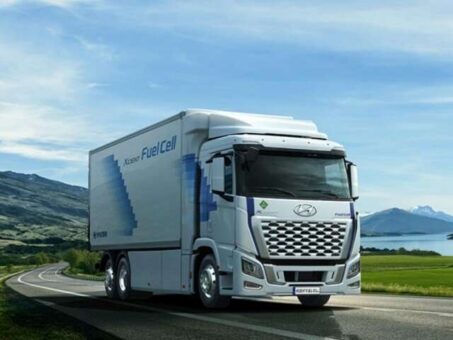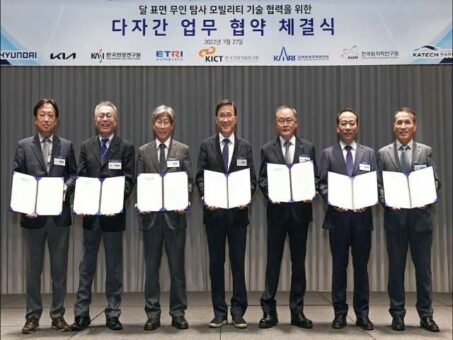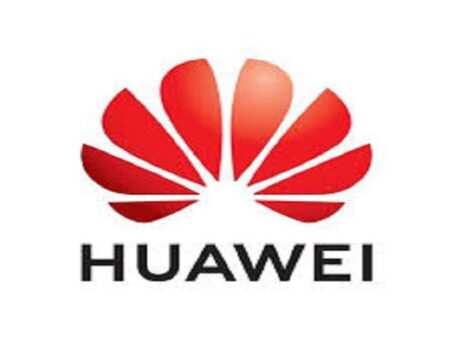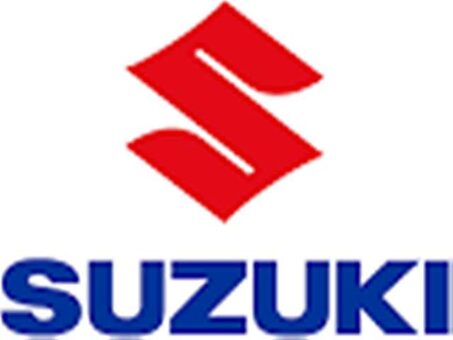SEOUL: Hyundai Motor Company announced on Tuesday to export XCIENT Fuel Cell heavy-duty trucks to Germany, the biggest commercial vehicle market in Europe.
Seven companies of Germany in logistics, manufacturing and retail will put 27 XCIENT Fuel Cell trucks into fleet service with funding for eco-friendly commercial vehicles from Germany’s Federal Ministry for Digital and Transport (BMDV).
READ MORE: Hyundai Motors announced 4% growth in July global sales
Mark Freymueller, Senior Vice President and Head of Commercial Vehicle Business Innovation of Hyundai Motor Company said:
“We are glad to now also officially enter the German commercial vehicle market with our heavy-duty fuel cell electric truck, the XCIENT Fuel Cell. Hyundai Motor, which is recognized as the leader in hydrogen fuel cell technology, will leverage this opportunity to expand our business into the wider European market by successfully supporting Germany’s efforts to achieve its carbon neutral goals,”
READ MORE: Hyundai, Kia sign pact to develop mobility to explore moon
In August 2021, BMDV rolled out its funding guidelines for commercial vehicles with alternative drive systems upon approval by the European Commission. The funding is available for battery, fuel cell and (overhead line) hybrid electric vehicles, corresponding to refueling/charging infrastructure and related feasibility studies. BMDV will have a budget of 1.6 billion euros available until 2024 to purchase eco-friendly commercial vehicles.
The aforementioned seven German companies initially applied for the funding with Hyundai’s XCIENT Fuel Cells and successfully received approval from BMDV, again proving XCIENT Fuel Cell’s product competitiveness.
READ MORE: Hyundai announces second quarter financial results
Hyundai Hydrogen Mobility, a joint venture between Hyundai Motor Company and Swiss company H2 Energy, has also established Hyundai Hydrogen Mobility Germany GmbH (HHMG) to actively expand its entry into the hydrogen-powered commercial vehicle market in Germany. In order to establish a hydrogen ecosystem in the country, HHMG will operate local market sales and customer service as well as upfitter management in the market. HHMG also plans to actively participate in the second funding program.
XCIENT Fuel Cell Specifications
The XCIENT Fuel Cell to be delivered is equipped with a 180-kW hydrogen fuel cell system with two 90-kW fuel cell stacks. The system’s durability and the vehicle’s overall fuel efficiency are tailored to the demands of commercial fleet customers. The 350-kW e-motor with maximum torque of 2,237 Nm enables dynamic driving performance.
READ MORE: Chevrolet unveils all-electric 2024 Blazer EV
XCIENT Fuel Cell’s seven large hydrogen tanks offer a combined storage capacity of around 31 kg of fuel, while a 72-kWh-powered set of three batteries provides an additional source of power. The maximum driving range is 400 km per charge. Refueling a full tank of hydrogen takes about 8 to 20 minutes, depending on the ambient temperature.
Launched in 2020 by Hyundai Motor, XCIENT Fuel Cell is the world’s first mass-produced hydrogen electric heavy-duty truck. The company has already deployed 47 units in Switzerland where they have accumulated more than four million kilometers in driving as of July 2022. The trucks are servicing 23 different customers in Switzerland.
READ MORE: Pakistan reintroduces capital value tax on motor vehicles








